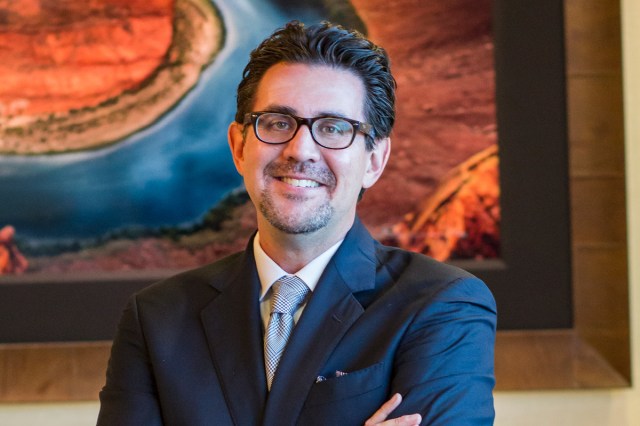
Maybe it’s the sight of a new construction project on a long-dormant desert parcel, or the seemingly busier than a usual shopping center, or seeing California license plates everywhere you look. Throughout our day-to-day lives, there are signs that Nevada has returned to a period of economic growth and opportunity.
The state’s new era of growth is evident in the numbers. After dropping to as low as 32nd in annual population growth rankings in 2011, Nevada has placed among the five fastest-growing states for four straight years, including second-place rankings in the past two years. Since 2012, the Silver State’s population has grown by a nation-leading 8.9 percent, outpacing other fast-growing sun belt states such as Utah, Texas and Florida. This recent trend is reminiscent of the early 2000s when Nevada topped the population growth rankings for seven years in a row.
Although the state is not expanding at quite that pace now, the list of economic and quality-of-life advantages that propelled Nevada’s growth then are the same factors fueling growth today. Employment opportunities remain a top draw, as the state is among the best when it comes to job creation. Year-over-year job growth in Nevada ranked it among the top five states in 44 of the past 55 months, including a streak of 19 straight months through the end of 2017, and since 2012, Nevada employment has grown by a nation-leading 17.3 percent. Nevada’s housing prices have appreciated considerably over the past few years, but they remain well below California levels, while other factors in Nevada’s favor, including the absence of a personal income tax, lower cost of living, a relative lack of highway congestion, and a favorable business environment, remain attractive to new residents.
While these factors help Nevada draw residents from all over the United States and abroad, they are especially attractive when compared to California, where unaffordable home prices, omnipresent traffic jams, and higher taxes are the norm. Notably, the Golden State still holds its appeal for more Americans than any other state, and it continues to grow at a middle-of-the-pack pace. Yet each year tens of thousands of Californians are voting with their feet and making the relatively short drive east on Interstate 15 or Interstate 80 to relocate to Nevada.
In 2016 more than 40,000 Californians moved to Nevada, bringing the total since 2000 to more than 650,000, or a third of all incoming new residents, according to Internal Revenue Service data. In-migration from California slowed slightly during the economic downturn but has since rebounded to approach pre-recession levels. Arizona, Texas, Utah and Florida round out the top five states of origins for new Nevada residents, but they pale in comparison to California, which alone accounts for as many incoming residents as the next 20 states combined.
Recent federal tax law changes make Nevada even more appealing to Californians, as newly enacted caps on deductions for state and local income and property taxes, known as the SALT deduction, and limits on the mortgage interest deduction make California a more expensive state to live in. Given these developments, we may very likely see an uptick of in-migration from our neighbor to the west.
As the influx of new residents to Nevada continues in the years to come, we can take comfort knowing that we’ve been here before. As a point of reference, the nearly 59,000 residents added in 2017 was higher than 39 other states, yet that one-year total is only the eighth-highest for Nevada since the turn of the century. We are a state built on migration and growth, acceptance and diversity, and our governmental policies reflect a mentality of looking ahead and preparing for future growth. That mentality is also ingrained in who we are as Nevadans. Three out of four state residents moved here from somewhere else, so we open our arms to the newcomers who, like many of us once did, left behind a place they knew and now call Nevada home.
Members of the editorial and news staff of the Las Vegas Review-Journal were not involved in the creation of this content.


